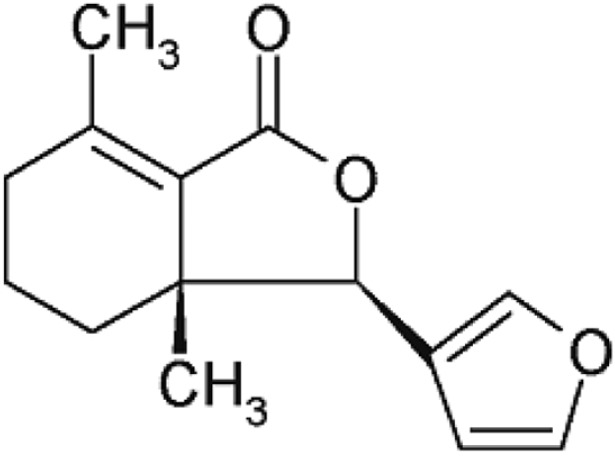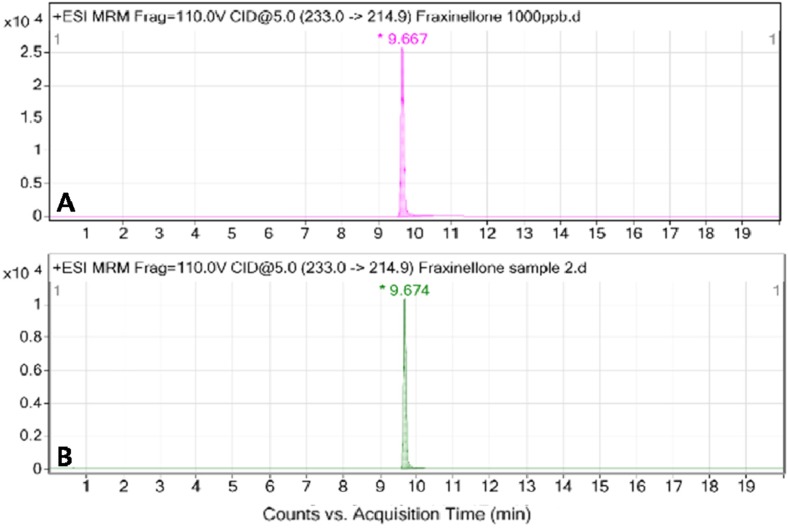Lab Anim Res.
2014 Dec;30(4):169-173. 10.5625/lar.2014.30.4.169.
Anticoccidial effects of the root bark of Dictamnus dasycarpus Turcz extract on experimental Eimeria tenella infection
- Affiliations
-
- 1Center for Animal Resources Development, Wonkwang University, Iksan, Korea. kimoj@wku.ac.kr
- 2Institute of Animal Experiment & Efficacy Evaluation, Wonkwang University, Iksan, Korea.
- KMID: 1737418
- DOI: http://doi.org/10.5625/lar.2014.30.4.169
Abstract
- Anticoccidial effects of the root bark of Dictamnus dasycarpus Turcz (Rutaceae) extract (DDE) were evaluated in chickens following oral infection with Eimeria (E.) tenella. Three-day-old chickens (n=30) were assigned to three groups (control, untreated, and DDE 0.1% treated). Chickens were fed a standard diet supplemented with or without DDE for 1 week prior to infection with E. tenella (10,000 sporulated oocysts per chicken). The effects of DDE on E. tenella infection were assessed by two parameters; fecal oocysts shedding and body weights gain. The DDE-fed chickens produced significantly reduced fecal oocysts (P<0.05) when compared to the E. tenella-infected group fed standard diet. Also, DDE-based diet, improved body weight loss caused by E. tenella infection. Our data demonstrated that DDE had remarkable anticoccidial activities against E. tenella. This finding might have implications for the development of anticoccidial drug. This study is the first to demonstrate anticoccidial effect of DDE on Eimeria parasites.
MeSH Terms
Figure
Reference
-
1. Dalloul RA, Lillehoj HS. Poultry coccidiosis: recent advancements in control measures and vaccine development. Expert Rev Vaccines. 2006; 5(1):143–163. PMID: 16451116.
Article2. McDougald LR. Protozoal infections. In : Saif YM, Barnes HJ, Glisson JR, Fadly AM, McDougald LR, Swayne DE, editors. Diseases of Poultry. Ames, USA: Iowa State Press;2003. p. 973–991.3. Stotish RL, Wang CC, Meyenhofer M. Structure and composition of the oocyst wall of Eimeria tenella. J Parasitol. 1978; 64(6):1074–1081. PMID: 739302.4. Williams RB. Relative virulences of a drug-resistant and a drugsensitive strain of Eimeria acervulina, a coccidium of chickens. Vet Parasitol. 2006; 135(1):15–23. PMID: 16361061.5. Yoon JS, Sung SH, Kim YC. Neuroprotective limonoids of root bark of Dictamnus dasycarpus. J Nat Prod. 2008; 71(2):208–211. PMID: 18198838.6. Zhao W, Wolfender JL, Hostettmann K, Xu R, Qin G. Antifungal alkaloids and limonoid derivatives from Dictamnus dasycarpus. Phytochemistry. 1998; 47(1):7–11. PMID: 9429316.7. Kim H, Kim M, Kim H, Lee GS, An WG, Cho SI. Anti-inflammatory activities of Dictamnus dasycarpus Turcz., root bark on allergic contact dermatitis induced by dinitrofluorobenzene in mice. J Ethnopharmacol. 2013; 149(2):471–477. PMID: 23850712.8. Lü M, Wu W, Liu H. Insecticidal and feeding deterrent effects of fraxinellone from Dictamnus dasycarpus against four major pests. Molecules. 2013; 18(3):2754–2762. PMID: 23455666.9. Stoter R, Young DW. Preskimmianine: The Biogenetic Precursor of Skimmianine from Dictamnus albus L. Tetrahedron Lett. 1972; 13(22):2199–2202.10. Souleles C. Flavonoids from Dictamnus albus. Planta Med. 1989; 55(4):402. PMID: 17262448.11. Souleles C. A New Glavonoid Glycoside from Dictamnus albus. J Nat Prod. 1989; 52(6):1311–1312.12. Stoter R, Young DW. Constituents of the root of Dictamnus albus L. Tetrahedron. 1973; 29(9):1217–1222.13. Jeong SH, Han XH, Hong SS, Hwang JS, Hwang JH, Lee D, Lee MK, Ro JS, Hwang BY. Monoamine oxidase inhibitory coumarins from the aerial parts of Dictamnus albus. Arch Pharm Res. 2006; 29(12):1119–1124. PMID: 17225461.14. Chang J, Xuan LJ, Xu YM, Zhang JS. Seven new sesquiterpene glycosides from the root bark of Dictamnus dasycarpus. J Nat Prod. 2001; 64(7):935–938. PMID: 11473427.15. Chang J, Xuan LJ, Xu YM, Zhang JS. Cytotoxic terpenoid and immunosuppressive phenolic glycosides from the root bark of Dictamnus dasycarpus. Planta Med. 2002; 68(5):425–429. PMID: 12058319.16. Lee HA, Hong S, Chung Y, Kim O. Sensitive and specific identification by polymerase chain reaction of Eimeria tenella and Eimeria maxima, important protozoan pathogens in laboratory avian facilities. Lab Anim Res. 2011; 27(3):255–258. PMID: 21998616.17. Woo WS, Lee EB, Kang SS, Shin KH, Chi HJ. Antifertility principle of Dictamnus albus root bark. Planta Med. 1987; 53(5):399–401. PMID: 3432420.18. Yu SM, Ko FN, Su MJ, Wu TS, Wang ML, Huang TF, Teng CM. Vasorelaxing effect in rat thoracic aorta caused by fraxinellone and dictamine isolated from the Chinese herb Dictamnus dasycarpus Turcz: comparison with cromakalim and Ca2+ channel blockers. Naunyn Schmiedebergs Arch Pharmacol. 1992; 345(3):349–355. PMID: 1377790.
Article19. Liu ZL, Xu YJ, Wu J, Goh SH, Ho SH. Feeding deterrents from Dictamnus dasycarpus Turcz against two stored-product insects. J Agric Food Chem. 2002; 50(6):1447–1450. PMID: 11879018.20. Roy A, Saraf S. Limonoids: overview of significant bioactive triterpenes distributed in plants kingdom. Biol Pharm Bull. 2006; 29(2):191–201. PMID: 16462017.
Article21. Balestrieri E, Pizzimenti F, Ferlazzo A, Giofrè SV, Iannazzo D, Piperno A, Romeo R, Chiacchio MA, Mastino A, Macchi B. Antiviral activity of seed extract from Citrus bergamia towards human retroviruses. Bioorg Med Chem. 2011; 19(6):2084–2089. PMID: 21334901.
- Full Text Links
- Actions
-
Cited
- CITED
-
- Close
- Share
- Similar articles
-
- Anticoccidial effects of the Houttuynia cordata extract on experimental animal infection model
- Anticoccidial effects of the Plantago asiatica extract on experimental Eimeria tenella infection
- Anti-toxoplasmosis effect of Dictamnus dasycarpus extract against Toxoplasma Gondii
- Anticoccidial effects of Galla rhois extract on Eimeria tenella-infected chicken
- Anticoccidial Activity of Berberine against Eimeria-Infected Chickens



